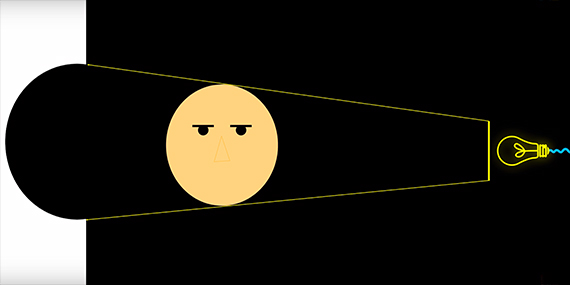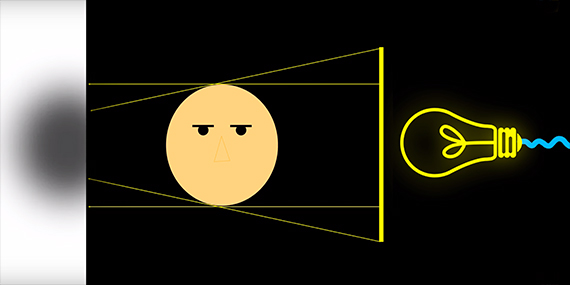More often than not, composing an image can be much like solving a puzzle. Although many photographers are filled to the brim with creativity, their challenge often lies in figuring out how to properly utilize their available tools and environment to best bring to life an idea. For many beginners, simply figuring out how to light a subject or scene can be one of the most difficult hurdles to overcome. Luckily, filmmaker Sareesh Sudhakaran recently produced a brief yet intuitive guide that explains the fundamentals of lighting:
As Sudhakaran mentions in the video, there are four types of light that every aspiring photographer should recognize: hard, soft, specular, and diffused. Differentiating between the four can be tough for the untrained eye. However, learning to identify and replicate each is one of the first steps necessary in mastering the medium.
Hard Light
Hard lights are most easily identified by the shadows that they cast rather than the way they rest upon a subject. Anything illuminated by the rays of a hard light will be accompanied by a clear, dark silhouette of a shadow. A soft light produces the opposite effect as the shadow loses definition and becomes more muted.
Soft Light
Any light source is capable of producing hard or soft light. Instead, two factors play into determining the quality of light.
The first is the size of the light source in relation to the subject. The larger the light source, the softer the light being cast on the subject will be.
The second element to take into consideration is the distance between the light source and the subject. The farther a light source is placed from the subject, the harder the light will become.

This diagram illustrates how the rays from a smaller, further light source create well defined shadows of a subject.

Here, the illustration demonstrates how larger, closer sources cause light to bend inward, creating blurred shadows.
Specular vs. Diffused Light
Apart from hard and soft lighting, beginning photographers should also understand the difference between diffused and specular light. These terms refer to the way in which light falls upon the subject rather than the characteristics of the shadows created by the light’s presence.
Specular light is defined by the occurrence of strong highlights and shadows. Parts of the subject may be incredibly bright, while other details may taper off into darkness.
On the other side of the spectrum is diffused light. Its defining attribute is an even wash that leaves every part of a subject equally lit.
A common misconception arises among people that don’t quite understand the difference between soft and diffused lighting. Even professional photographers often use these terms interchangeably. The easiest way to differentiate between the two is to simply remember their definitions. Soft light refers only to shadows and has little to do with how the light actually falls upon a subject. Diffused light is created by increasing the surface of a light source, scattering the rays further out in order to disperse them more evenly. Since diffusers increase the size of a light source, they often create circumstances that are beneficial to softer light. However, since the distance of the source from the subject also plays an important role in the quality of light, it is very possible for a diffused light source to cast hard shadows.
Any seasoned photographer will admit that the most effective way to master photography lighting is through plenty of practice. Nevertheless, being knowledgeable about the ways in which light functions provides an indispensable advantage toward an artist’s career and creative pursuits alike.
Like This Article?
Don't Miss The Next One!
Join over 100,000 photographers of all experience levels who receive our free photography tips and articles to stay current:






Leave a Reply